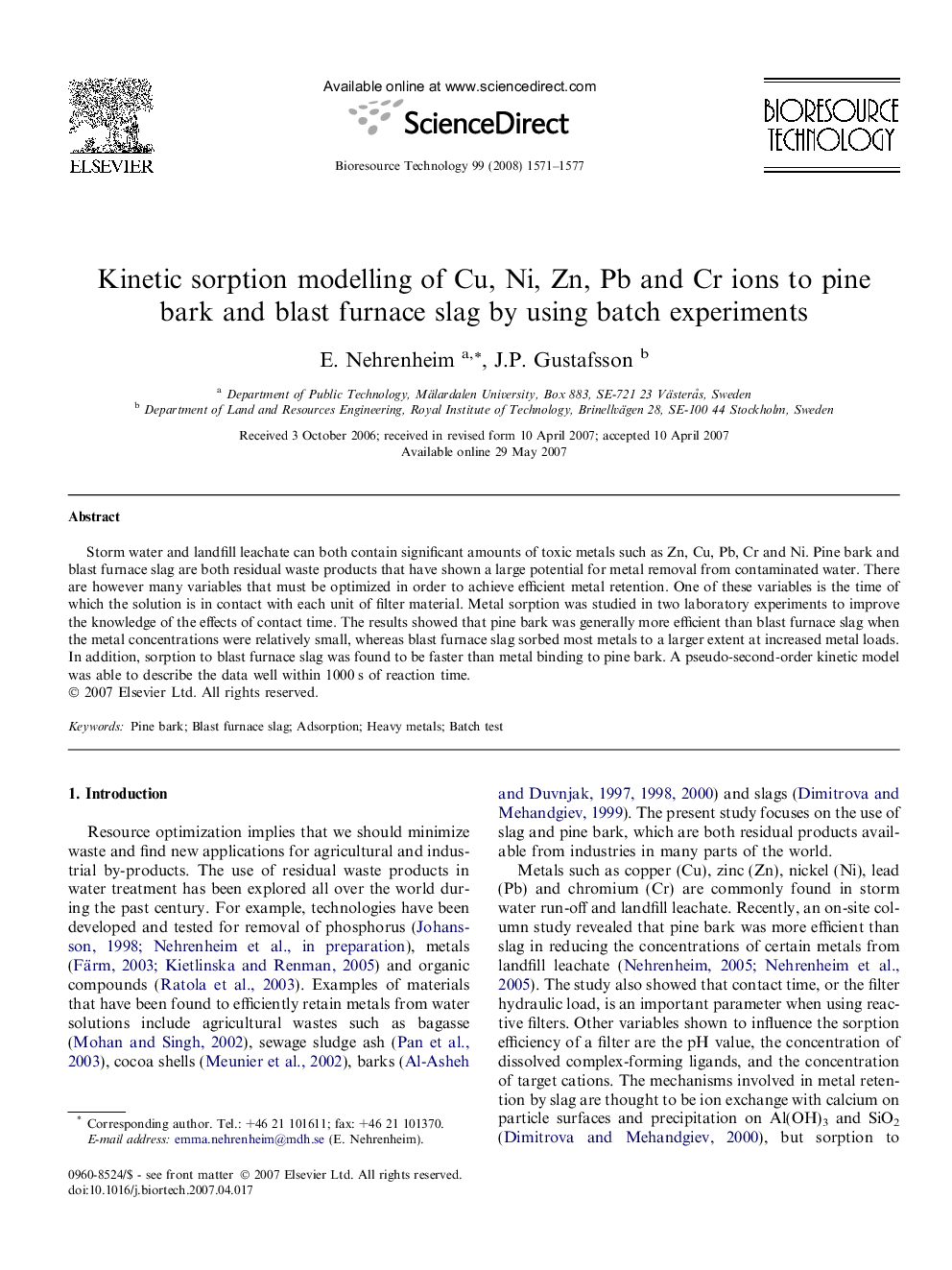| Article ID | Journal | Published Year | Pages | File Type |
|---|---|---|---|---|
| 684658 | Bioresource Technology | 2008 | 7 Pages |
Storm water and landfill leachate can both contain significant amounts of toxic metals such as Zn, Cu, Pb, Cr and Ni. Pine bark and blast furnace slag are both residual waste products that have shown a large potential for metal removal from contaminated water. There are however many variables that must be optimized in order to achieve efficient metal retention. One of these variables is the time of which the solution is in contact with each unit of filter material. Metal sorption was studied in two laboratory experiments to improve the knowledge of the effects of contact time. The results showed that pine bark was generally more efficient than blast furnace slag when the metal concentrations were relatively small, whereas blast furnace slag sorbed most metals to a larger extent at increased metal loads. In addition, sorption to blast furnace slag was found to be faster than metal binding to pine bark. A pseudo-second-order kinetic model was able to describe the data well within 1000 s of reaction time.
